L R AS Published on Monday 12 October 2020 - n° 335 - Categories:Thread of the Week
Le Fil de la Semaine n° 335 of October 12
THIS WEEK'S NEWS HIGHLIGHTS
If there were only five texts to read this week :
FRANCE
 * A tax credit for the energy renovation of the premises of VSEs and SMEs
* A tax credit for the energy renovation of the premises of VSEs and SMEs
 * Beware of the questioning of tax advantages
* Beware of the questioning of tax advantages
THE FILE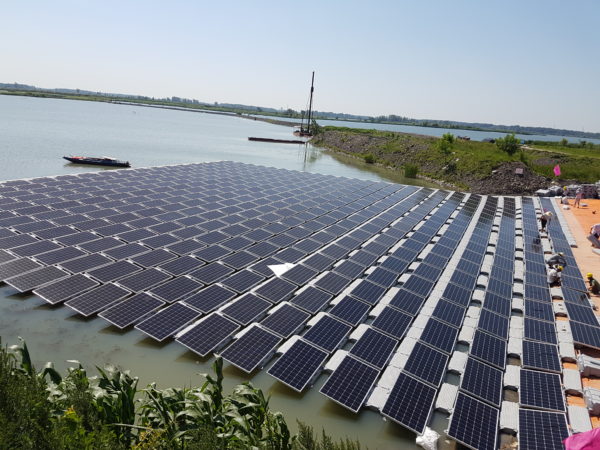 * Floating power plants (1st part): the axis of PV development in the world
* Floating power plants (1st part): the axis of PV development in the world
Floating power plants (2nd part): the advancement of knowledge
Floating power plants (3rd part): an increasingly local use
Floating power plants (part 4): global achievements
Other interesting articles :
FRANCE![]() * Schneider Electric launches a charge controller
* Schneider Electric launches a charge controller
![]() * Cap Sud specialises in 100 kWp power plants.
* Cap Sud specialises in 100 kWp power plants.
.
THE SUBSIDIARY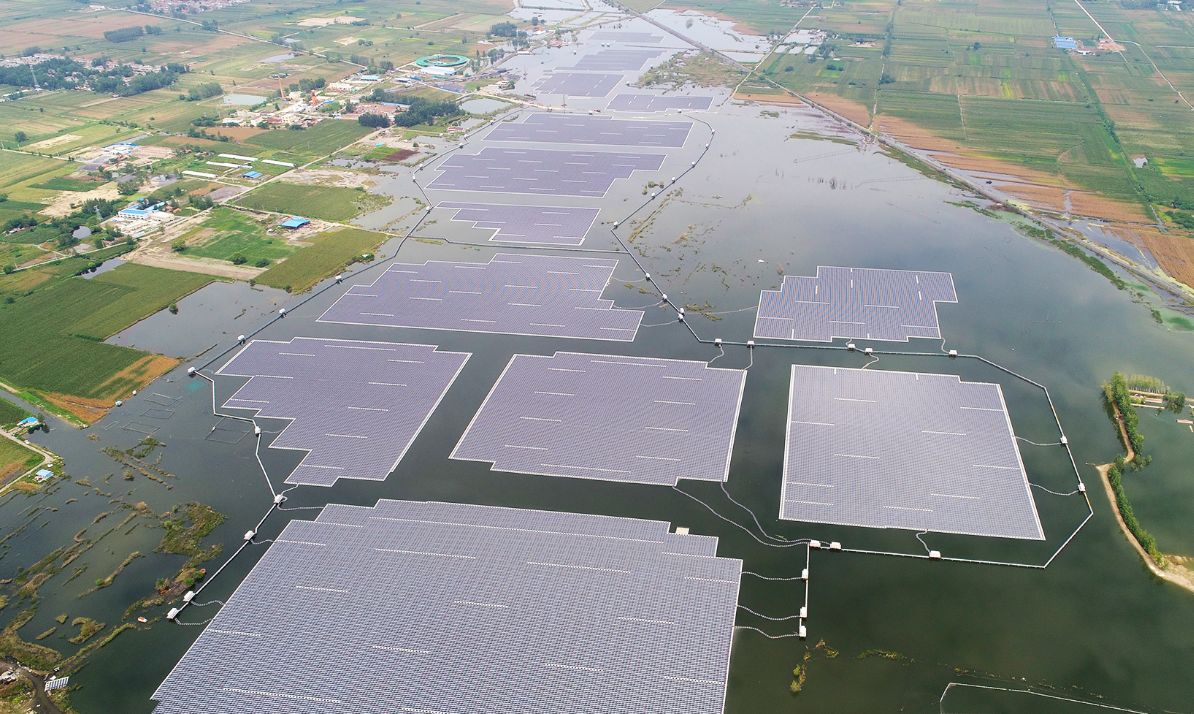 * Installing two-sided panels on floating power plants?
* Installing two-sided panels on floating power plants?
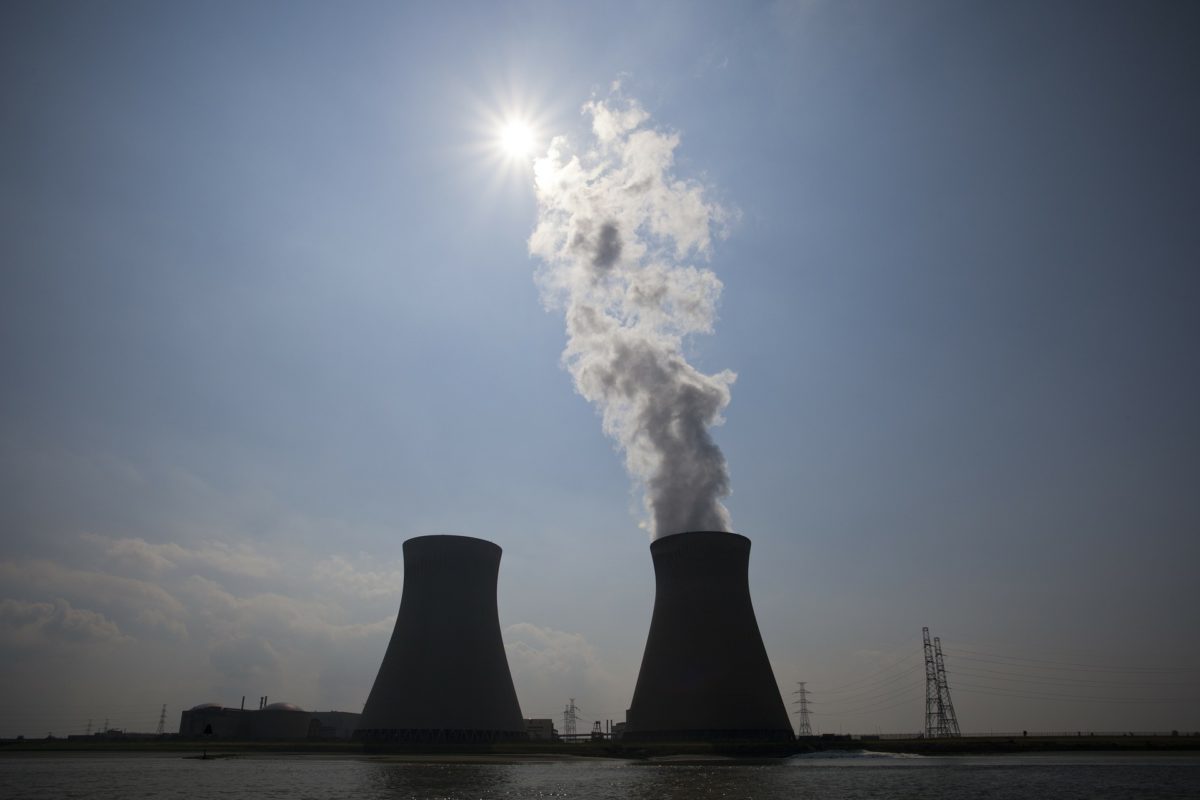 * Nuclear power is less efficient than renewable energy in reducing CO2 emissions.
* Nuclear power is less efficient than renewable energy in reducing CO2 emissions.
.
THE WORLD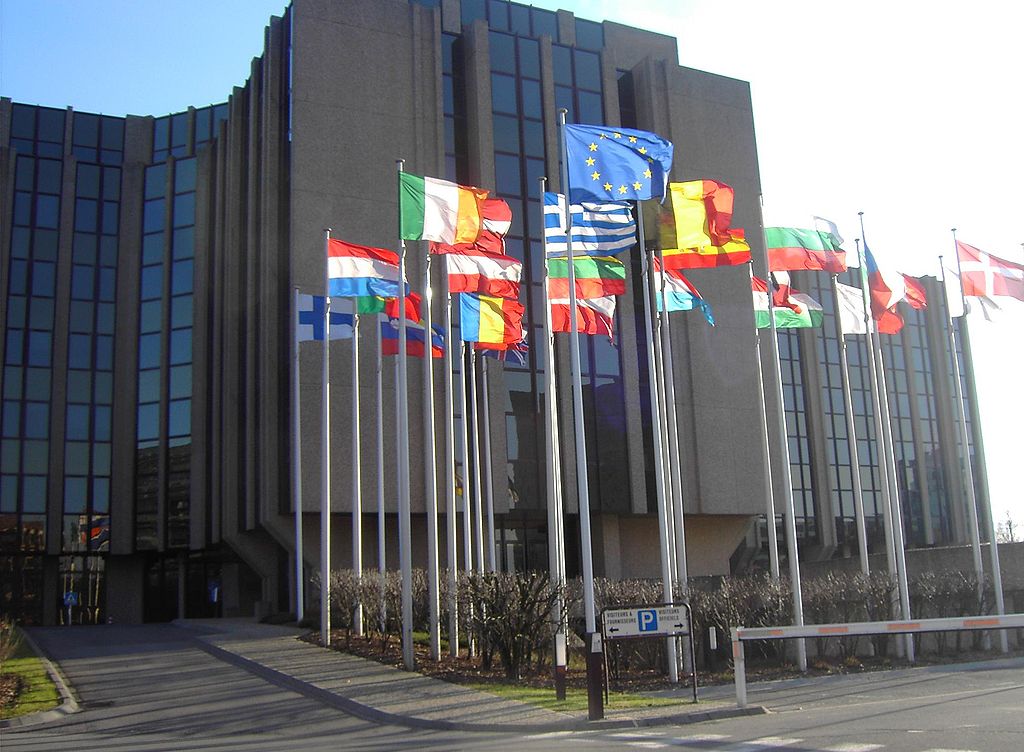 * Interesting new initiative from Europe
* Interesting new initiative from Europe
 * Very low forecasts for installations in China in 2020
* Very low forecasts for installations in China in 2020
 * In the United States, an ultra-low carbon solar alliance has just been created.
* In the United States, an ultra-low carbon solar alliance has just been created.
.
THE PRODUCTS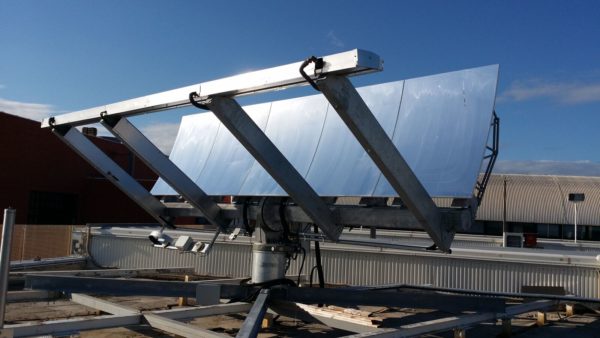 * New modular concentration system
* New modular concentration system
.
MISCELLANEOUS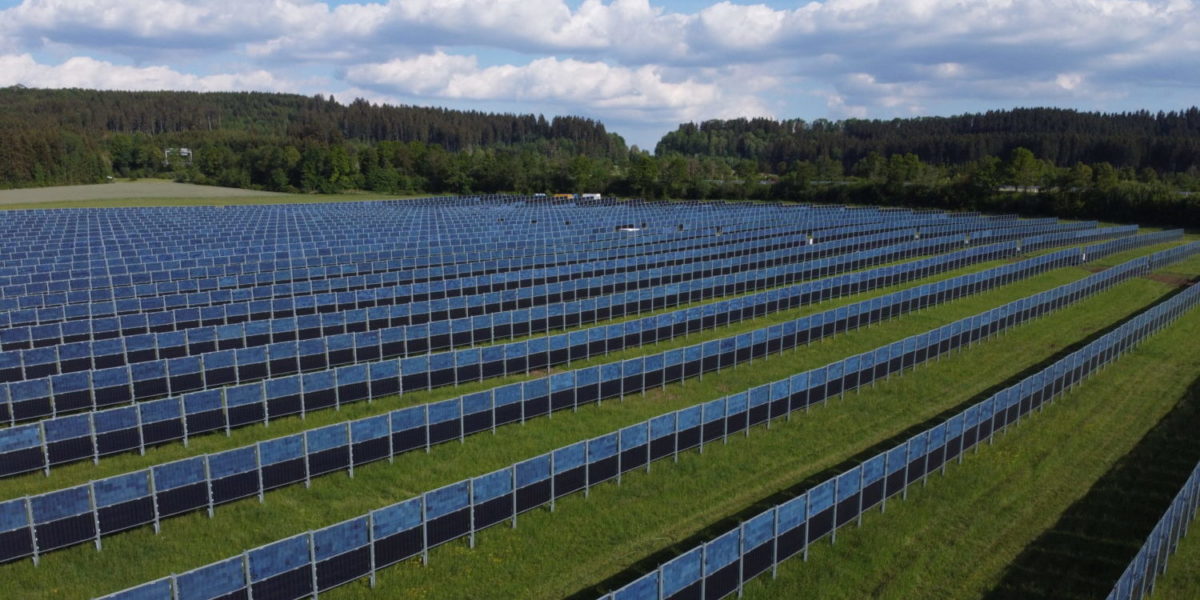 * Vertical panels to facilitate agro-voltaism
* Vertical panels to facilitate agro-voltaism
THE DEVELOPMENTOF THESE TITLES
.
FRANCE
 * A tax credit for the energy renovation of the premises of VSEs and SMEs
* A tax credit for the energy renovation of the premises of VSEs and SMEs
A tax credit for the energy renovation of the premises of VSEs and SMEs is introduced from 1 October 2020.
It is granted for expenses incurred between 1 October 2020 (estimates dated and signed after 1 October) and 31 December 2021. They must be carried out by a qualified professional, recognised as an environmental guarantor (RGE). The amount of this tax credit is 30% of eligible expenditure, up to a limit of €25,000 per company. The tax credit can be cumulated with other existing aid, such as energy saving certificates (CEE).
Eligible expenditure incurred (signed estimate) must be declared during the year concerned by the tax return (income tax or corporation tax). The eligible expenditure will be based on the total amount of expenditure excluding tax (including labour costs and any assistance to the contracting authority).
For more information, companies can
- contact the FAIRE advisers via the website www.faire.gouv.fr
- call the national telephone number: 0 808 800 700
- go to the nearest DO area https://www.faire.gouv.fr/trouver-un-conseiller
Tecsol of 8 October
 * Beware of the questioning of tax advantages
* Beware of the questioning of tax advantages
At a time when the French government is seeking to challenge contracts for power plants of more than 250 kWp signed before 2011, there is a great risk that controls will be carried out to question the legality and compliance of the contracts. This would be the way to terminate them or even demand a refund for non-compliance.
Ener-Pacte carries out detailed diagnostics of large power plants. However, out of the hundred or so power plants already audited, the company has found a large number that do not comply with regulations or technical requirements. The interventions often result in an increase in revenue for the power plant owner. Ener-Pacte is remunerated on the additional profitability generated by its interventions.
Full Sun of October 8
+
The Ministry of Economy and Finance is launching consultations with the professional unions to reduce the benefits of the 850 or so contracts signed before 2011 with a power of more than 250 kW. The aim is to achieve a budget saving of €600 million. The negotiation period will be short because the amendment is to be included in the 2021 Finance Act, which is due to be debated by the Assembly in the coming weeks.
https://www.greenunivers.com/2020/10/tarifs-solaires-pre-2011-une-semaine-pour-transiger-244249/
GreenUniverses of 7 October
 * Schneider Electric launches a charge controller
* Schneider Electric launches a charge controller
Schneider Electric launches a charge controller to cope with storage battery depletion
Usually, if a battery runs down during the night or after a prolonged power outage, the UPS will not be able to recharge the battery at daybreak. Grid power must be used to restart the system. The company claims that its controller can recharge the battery from the PV panel.
Other very technical details are provided in the article
PV Magazine of 8 October
Editor's note It is not known whether this new product is unique on the market or whether Schneider is simply offering an item already available from its competitors. We do not know whether it is complex to install or very simple. We don't know its price level, which could eliminate different buyers.
Schneider definitely wants to make its achievements known.
 * Cap Sud specialises in 100 kWp power plants.
* Cap Sud specialises in 100 kWp power plants.
Cap Sud is the leading French company in the development and construction of 100 kWp solar power plants. It is one of the rare companies in France to be able to manage all the files transversally. It has installed 110 MWp in France, Portugal and Madagascar.
It has installed 25 MW in 2019, should install 28 MW this year and expects 40 GW in 2021. The company provides a complete self-consumption offer (study, installation, commitment to production) to individuals and professionals, under the My Sun brand (250 kits sold) and My Sun Pro, which works with Citroën, among others.
https://www.greenunivers.com/2020/09/cap-sud-change-dechelle-243619/
GreenUniverses of 25 September
.
.
THE FILE * Floating power plants: the axis of PV development in the world
* Floating power plants: the axis of PV development in the world
Floating power plants (2nd part): the advancement of knowledge
Floating power plants (3rd part): an increasingly local use
Floating power plants (part 4): global achievements
It is not possible to present the text here, as it is so long. It is better to click on them or to refer to the original:
https://www.pv-magazine.com/2020/09/22/floating-solar-pv-gains-global-momentum/
 * Installing two-sided panels on floating power plants?
* Installing two-sided panels on floating power plants?
There is a technical contradiction: there must be a sufficient inclination so that there is a reflection of the water on the back of the panel. But then, the panel has a wind grip, which encourages it to be positioned as close to the water as possible. Moreover, it must be close to the water for it to be refreshed.
The University of Ontario has modelled the installation of the panels on the water. Its finding: compared to a single-sided installation, panels facing north/south can receive up to 55% more solar irradiation, while an installation facing east/west can receive 33% more. The double-sided panel has achieved efficiency gains in all positions and orientations compared to the single-sided panel.
These laboratory studies did not address water cooling of the panels, the effect of temperature on performance, or the comparison between fixed panels and panels with trackers.
https://www.pv-magazine.com/2020/10/07/investigating-bifacial-for-floating-pv/
PV Magazine of 7 October
 * Nuclear power less efficient than RE to reduce CO2 emissions
* Nuclear power less efficient than RE to reduce CO2 emissions
British researchers examined carbon emission data from 123 countries over 25 years. They sought to determine whether nuclear power and renewable energy had the same emission rates. They found that RE was seven times more effective than nuclear in reducing these emissions.
The study conducted by the University of Sussex (UoS) in the UK found a correlation between nuclear power generation and GDP: the higher the GDP, the more emissions were reduced by nuclear power. Conversely, the lower the GDP, the more CO2 emissions increased. On the other hand, they did not notice any relationship with CO2 per capita.
Conversely, RE has led to a reduction in CO2 emissions "for all periods and all types of countries", without any significant link to GDP.
Curiously, they found that the development of nuclear power was hindering the emergence of renewable energies, and vice versa.
This study focused on CO2 emissions. It did not study the respective costs of the two energy sources, reliability, life cycle, risks, waste management and ecological, political and security impacts.
PV Magasine of 6 October
.
.
THE WORLD
 * Interesting new initiative from Europe
* Interesting new initiative from Europe
Around 20 professionals are participating in a new European project called Trust-PV. It aims to develop solar O&M solutions that are compatible with the grid and distributed installations or electricity companies. They will have to increase the performance and reliability of solar photovoltaic components and systems.
The programme will be spread out over four years and has been allocated €12m in funding.
Some of the participants in this programme: BayWa r.e., Enel Green Power, Solarcentury, SolarPower Europe, DSM, TÜV Rheinland Energy and Huawei.
PV Tech of 6 October
Editor's note What does Huawei have to do with this European programme? Spying on the progress of European thinking? Providing information to Beijing and its colleagues? Adapt its products to future European standards? There is no point in making efforts to ensure that competitors have the privileged information and can adapt! Really there is a lack of logic and strategy among our leaders.
That said, anything that can increase the quality of European products and processes is a good attitude.
China added 16 GW of solar generation capacity in the first eight months, including 4.5 GW in July-August according to the National Energy Administration.
Of these 16 GW, 8.9 GW were installed as Concentrated Solar Power (CSP) and 7.2 GW came from distributed photovoltaics.
Numerous projects, mainly for the commercial sector, were postponed due to the rise in panel prices at the beginning of the summer.
According to PV Men, the auction is expected to deliver 8.5 GW in Q4. On the other hand, panel suppliers estimate that 15 GW will be commissioned by the end of the year. Thus, the 2020 installations would be between 25 and 31 GW in China.
PV InfoLink of 5 October
NDLR A priori the most reliable assessment is that of the panel manufacturers, with this remark: the panels may have been delivered but not installed, or installed but the plant is not connected before the end of the year.
 * In the United States, an ultra-low carbon solar alliance has just been created.
* In the United States, an ultra-low carbon solar alliance has just been created.
In the United States, an ultra-low carbon solar alliance (or ULCS) has just been created. The founding members include First Solar, Q Cells, REC Silicon, Hemlock Semiconductor, NorSun and Wacker, ...
Their claim is that not all panels are the same and that there are great disparities between them, depending on where they come from and their technology.
This organisation wants to encourage governments and panel buyers to select the most virtuous panels. They can reduce their carbon footprint by 50%, and help reduce overall emissions. Virtuous signs could receive a label or tag to indicate their interest.
PV Magazine of 9th October
NDLR This information can be read as the introduction of a selection in the quality of the panels. We can also see the launch of an offensive against imports (from Asia), because Chinese products will be given bad marks... It is this attitude which is probably to be favoured because this association brings together all the companies operating in the United States which have to complain about imports.
.
.
THE PRODUCTS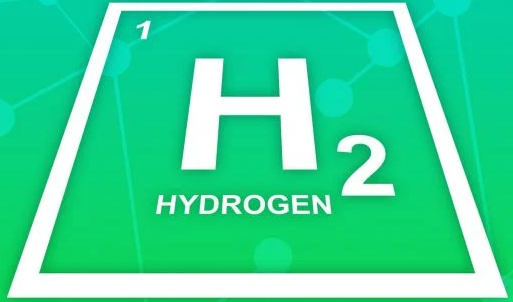 * Hydrogen characteristics and European plan (analysis by M Liebreich from BloombergNEF, 1st part)
* Hydrogen characteristics and European plan (analysis by M Liebreich from BloombergNEF, 1st part)
Michael Liebreich makes an uncompromising analysis of the problems posed by hydrogen. He underlines the astronomical financial cost of the quest for this gas. Although summarised below, the article is worth reading in its entirety at the address below.
Hydrogen seems a perfect gas. It can be produced wherever there is electricity and water. It can generate either heat or electricity. It can be produced, stored, transported and used without toxic pollution or CO2 emissions. It carries three times more energy per unit of weight than petrol, diesel or aviation fuel. It can provide energy with an efficiency of 60% thanks to a fuel cell that can also work in reverse. It burns at a temperature similar to that of natural gas.
Hydrogen also has an impressive list of disadvantages It takes energy to separate it because it does not exist in its native state. Its storage requires compression to 700 times atmospheric pressure, refrigeration to minus 253 degrees Celsius, or a combination with an organic chemical or metal hydride. Natural gas has four times as much energy as hydrogen per unit volume, whether liquefied or as a gas at a given temperature and pressure. Fuel cells and other equipment designed to use hydrogen have many moving parts that require maintenance. It can weaken metal. It escapes through the smallest leaks. And, most importantly, it is truly explosive.
The European Union has presented its Green Plan. It proposes to increase the capacity of electrolysers in the EU from 60 MW at present, to 6 GW in 2024, then to 40 GW in 2050, at a cost of between 24 and 42 billion euros. Providing renewable energy will require spending between €220-340bn on new solar and wind power plants with a capacity of 80-120 GW. A further €11 billion is needed to upgrade existing installations and €65 billion for transport, distribution, storage and station refuelling. Hence a financial amount of €320 to €458 billion, which only covers production, but does not include demand costs.
Electrolysis needs will reach 500 GW, the equivalent of Europe's peak electrical load. The production facilities must therefore be doubled!
This amount would be provided by the 1,000 billion euros of the Green Plan (2/3 in subsidies, 1/3 in loans).
The EU strategy aims to bring the cost of producing green hydrogen in Europe down from the current €2.5-5.5 per kg to €1.1-2.4 per kg by 2030. Is this a reasonable target?
BloombergNEF of 8 October
The cost of green hydrogen. It is determined by four main factors: the cost of renewable electricity, the capacity factor at which plants operate, the cost of smelters and the cost of capital.
The price per MWh is falling steadily. By 2030, many parts of the world will produce their MWh at $20. The cost of smelters will also decline. The Union wants to halve the cost of electrolysers so that it will fall to 450 €/kW in 2030. However, the main Chinese manufacturers are already supplying equipment at $200 per kW. This is because they have relied on alkaline electrolysers, whereas the EU has for the past ten years focused on developing solid oxide and proton exchange membrane (PEM) technologies, but this technology is more expensive and should not be able to reach the 200 €/kW
The need is to use the cheapest energy possible.. Producers will use free energy and supplement their needs with purchases on the market, but they will still face competition from countries with a lower RE price than Europe. Therefore, by 2050, BloombergNEF estimates that green hydrogen will be available at a price of between $0.8 and $1.0 per kilo. The editor of the article would not be surprised to see it fall below this level.
It should also be noted that green hydrogen based solely on offshore wind is unlikely to be competitive with production based on the combination of cheap solar energy and onshore wind.
Blue hydrogen It is produced by natural gas or by the gasification of coal whose CO2 emissions are captured. Europe estimates the current cost of producing blue hydrogen at €2 per kg in 2030, equivalent to the cost of green hydrogen.
The commission recognises that blue hydrogen will play a role. It will invest €11bn to modernise half of existing facilities.
The disadvantage of blue hydrogen is that only 90% of the CO2 is captured. Increasing this rate is costly. The second negative aspect is the loss of natural gas into the atmosphere. The third (for some ecologists) is that the oil industry will be the actor.
Hydrogen can also be produced by pyrolysis. (also known as turquoise hydrogen): natural gas passes through a molten alkali or metal, producing carbon black. This process seems economically promising, but it does not eliminate the risk of fugitive emissions and the involvement of oil and gas companies.
Nuclear energy can be used to produce hydrogen because it is produced on a regular basis and produces waste heat that can be used. Are these sufficient advantages?
Another type of carbon-free hydrogen is thermal hydrogen.. The by-product of electrolysis, oxygen, is used to operate a generator that will provide electricity, heat and CO2 ready for use or storage, ata much lower cost than separating CO2 from normal exhaust gases. Some of the heat and electricity is in turn used for high-temperature electrolysis, generating hydrogen and oxygen consumed in the process.
The cost of transport : between 7 and 50 eurocents per kg will have to be added. If trucks or ships are used, the cost rises to between 60 cents and $7 per kg of hydrogen, depending on the volume and the distance.
Use ammonia transport: Where there are no pipelines, the most viable vector for bulk transport of hydrogen over long distances appears to be ammonia. But even then, the total cost of transport, including conversion, storage, etc., could be three times the cost of producing the hydrogen in the first place.
In summaryThe author argues that the supply of hydrogen will mainly favour the players financially.
Will green hydrogen be competitive with blue hydrogen by 2030? Probably. Will it be competitive with brown hydrogen in Europe? A large part of green hydrogen will probably be imported from regions where it can be produced at lower cost. And even if it is produced in Europe, it will probably not be made using European electrolysers, and certainly not using only European renewable energy.
BloombergNEF of 8 October
 * New modular concentration system
* New modular concentration system
The Italian company Greenetica Distribution and various research centres have developed a new linear and parabolic system with photovoltaic and thermal concentration (CPVT):
The system consists of parabolic cylindrical mirrors that concentrate solar radiation on a linear receiver. It consists of two photovoltaic-thermal modules, each 1.2 metres long. The photovoltaic-thermal panel is equipped with multi-junction solar cells based on indium and gallium phosphide (InGaP), gallium arsenide (GaAs) and germanium (Ge). The prototype system has a surface area of 6.8 square metres.
The industrialised system has a high-performance heat exchanger.

The system is modular. It can be adapted to a wide range of applications, from residential to large projects. The system can be composed of a single 1.2 m long receiver, which is suitable for a house. Its peak power is 3.5 kW (1 kW electric plus 2.5 kW thermal). Its efficiency is 91%.
The first standardised model has five receivers, with a total length of 6 metres. "The expected annual production of electricity in northern Italy is between 30,000 and 35,000 kWh, one third of which is electricity and two thirds heating. This model is worth €16,725 in Italy.
Initially, only the thermal system will be available, while the photovoltaic-thermal version for the combined production of heat and electricity should be launched in 2022.
Combined heat and power generation reduces the carbon footprint, allows flexible temperature, has a higher peak power per m², stable production and easy integration with existing installations.
https://www.pv-magazine.com/2020/10/06/concentrating-photovoltaic-thermal-system-with-91-efficiency/
PV Magazine of 6 October
.
.
MISCELLANEOUS * Vertical panels to facilitate agro-voltaism
* Vertical panels to facilitate agro-voltaism
A 4.1 MW solar power plant was built in Baden-Württemberg (southern Germany) with vertically installed two-sided N-type panels. This should allow the fields between the panels to be cultivated.
PV Magazine of 8 October
.




